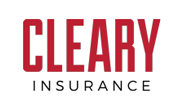Recent Department of Labor Investigations
Presented by Al Corvigno
J&J Snack Foods
Two federal investigations have found that temporary production line workers at J&J Snack foods Corp., were cheated out of their wages by the company and two staffing firms. The DOL found that J&J Snack Foods in N.J. did not properly pay their employees the minimum hourly wages and overtime. As a result they were fined $ 2.1 million for back wages and liquidated damages to 677 workers.
The department’s most recent investigation found 465 workers at J&J’s Swedesboro facility provided by staffing firm Sebastian and Sebastian LLC were paid straight time for overtime hours worked beyond 40 in a work week, which is in violation of federal law. In response, J&J agreed to pay a total of $1,260,254 in back wages and liquidated damages to the impacted workers.
In addition, the department assessed a $20,000 civil penalty for the willful, repeat nature of the violations found in the New Jersey investigation. Earlier in the year, the department found that J&J and Pennpak, a staffing firm that provided workers at the J&J facility in Chambersburg, Pennsylvania, failed to pay their workers at least the federal minimum wage and overtime. In that case, J&J agreed to pay 212 temporary workers $920,000 in back wages and liquidated damages.
DOL Sues Benefit Plan Providers
The U.S. Department of Labor filed a lawsuit in the U.S. Disrict Court of Maryland against Chimes District of Columbia, Inc., affiliated companies, company executives and employee benefit plan providers over allegations that an employee benefit plan sponsored by Chimes paid millions of dollars in excessive fees.
DOL investigations found that Chimes violated the Employee Retirement Income Security Act (ERISA ) when they caused a health and welfare plan to pay excessive fees. They included those paid to the plan’s third-party administrator, FCE Benefits Administrators, Inc. and another company, Benefits Consulting Group (BCG).
The lawsuit also alleged owners Gary Beckman and Stephan Porter, caused the plan to engage in transactions for their own benefit and exercised control over the plan’s contracts with other service providers to increase FCE’s compensation through undisclosed commissions and fees. All of these actions are violations of ERISA.
FCE and BCG pledged $330,000 to the Chimes Foundation, and during 2009 – 2014 paid another $400,000 while BCG also pledged $282,500. In addition, FCE employed a child of Chimes and had BCG’s owner provide discounts to Chimes on other non-plan work. In connection with those payments and other benefits FCE and BCG were retained as service providers for the health and welfare plans, which violates federal law. Both companies are liable for profits earned as a result.
It is troubling that service providers made substantial payments to the plan sponsor, and not surprising that those services were overpriced. The DOL will act vigorously to protect plans where the integrity of the service provider is compromised by unlawful payments to plan fiduciaries. In addition to having the companies pay back any profits including penalties, DOL is asking for the removal of FCE, Beckman, Porter and BCG as fiduciaries or service providers for any ERISA covered plan in the future. All company officers may also face prison time, depending on the legal outcome.
Investigations are time consuming and complicated. It is imperative your personnel are properly trained in the fundamentals of the SCA and how to handle DOL audits and investigations. If you have any questions or would like additional information, please do not hesitate to contact us.
At Cleary, we know how important a comprehensive benefits package can be to your continued success. Give us a call today at 617-723-0700 and we will work with you to create a plan that meets your fringe-benefit obligations and provides your employees with valuable benefits.
